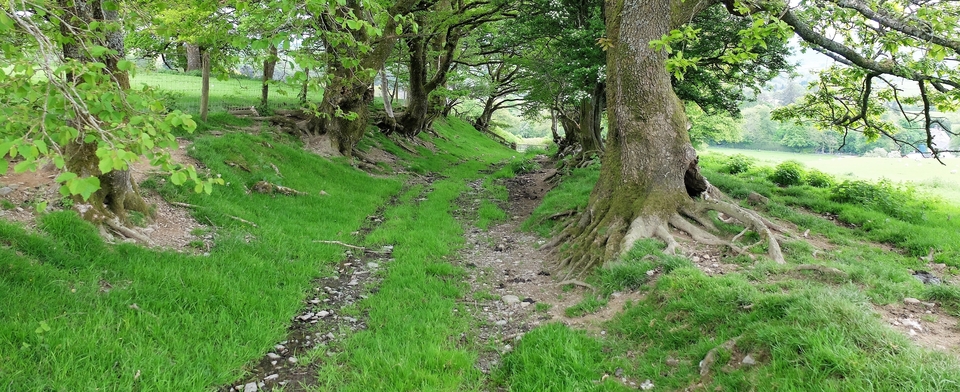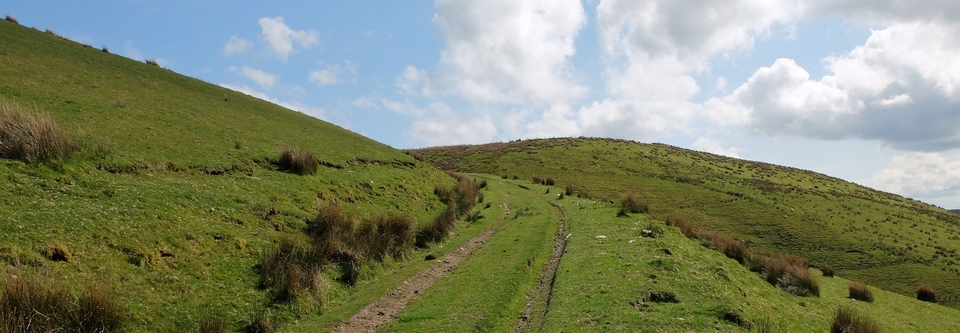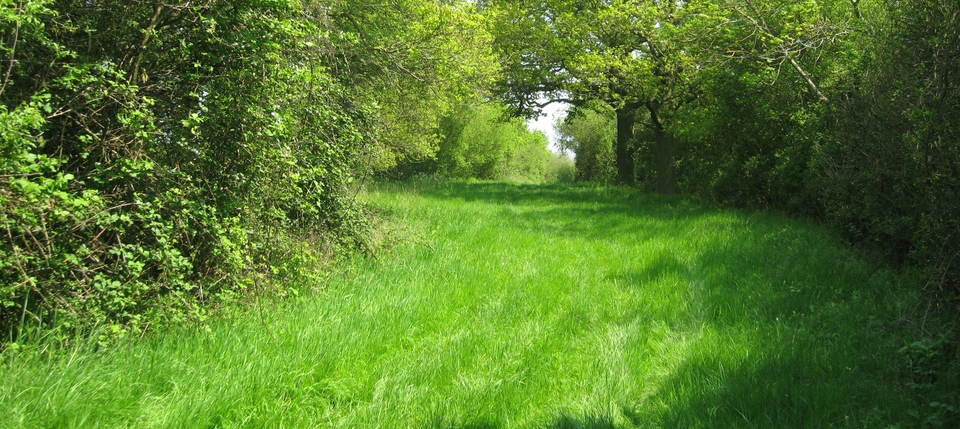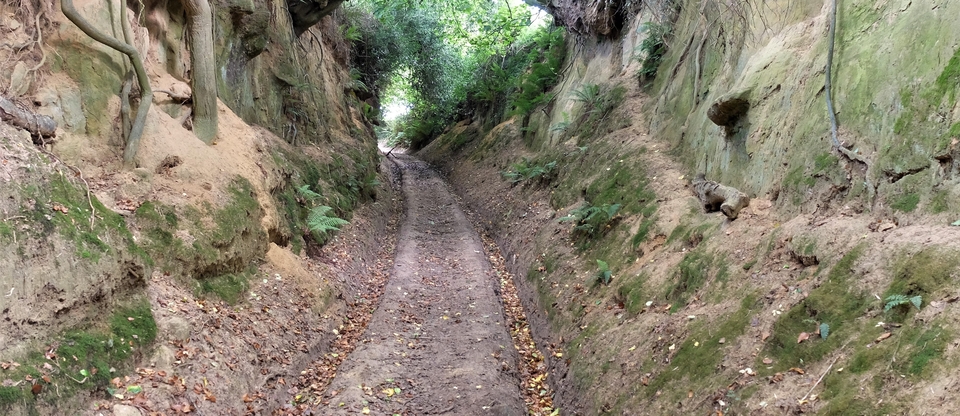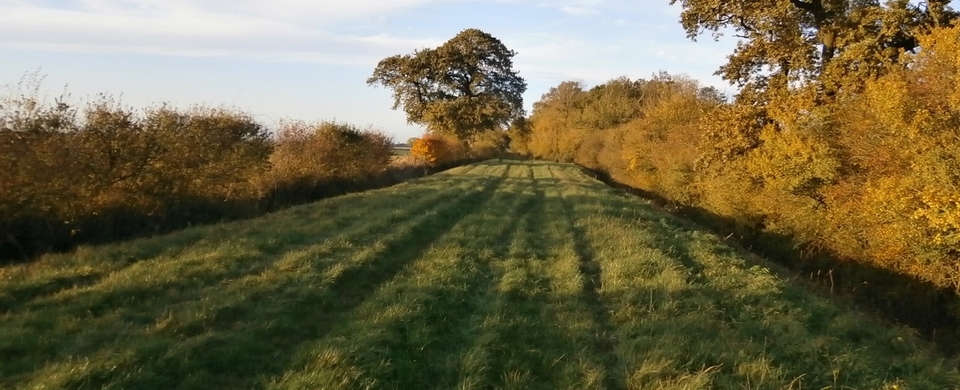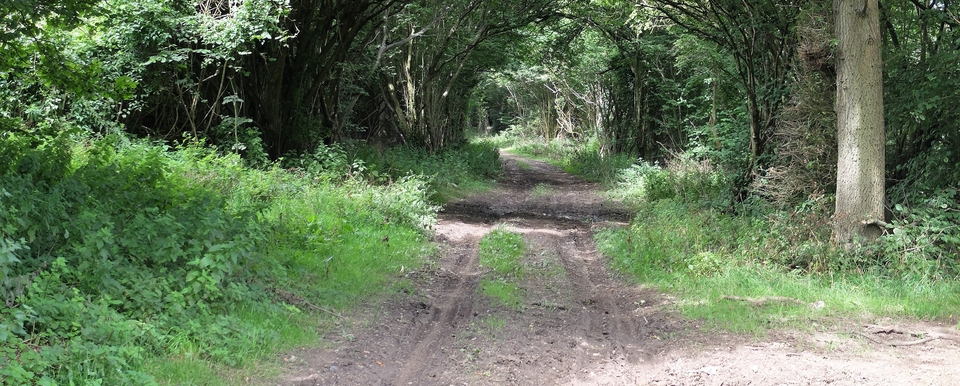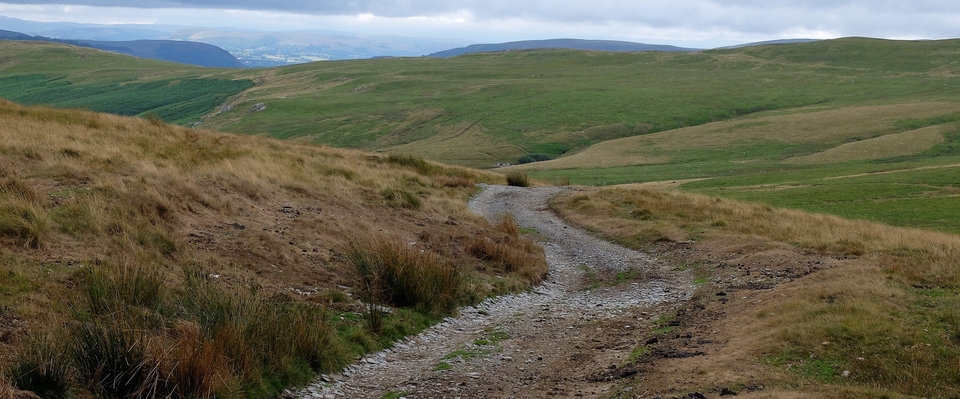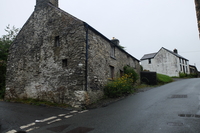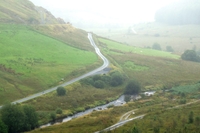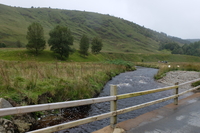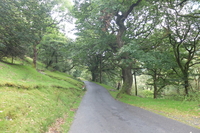Tregaron to Abergwesyn
Tregaron, “the home of many sheep & few people” at the foot of the Cambrian Mountains, is definitely remote: near the town lie the remotest chapel in Wales (at Soar-y-Mynnydd), the remotest road (to Abergwesyn), and on the remotest road the remotest telephone box. (It hasn't worked for years, but it's amazing how many people want to save it.)
The rich soil to the south made the area excellent stock-breeding country, and the Tregaron's weekly market and annual fair attracted huge crowds till the coming of the petrol engine.
The oldest building in the town is The Fountain Inn (#1)1 which stopped trading in 1963; the most famous must be The Talbot Inn – named after the Talbot hunting-dog, now extinct as a breed. The hunts & droves met in front of it; at the back was Pen-Pica, the shoeing field.2
Treggy was the last “lowland” station before the real mountains began, so it was an important assembly point for Cardiganshire droves. The route eastwards was an arduous one. The rugged terrain was unfenced, so an excitable herd at the start of a long drove must have taken patience & experience to control.
The road they followed is almost mythic: it features in every book on droving in Wales I have read. The grass today looks green (sometimes), but before the introduction of nitrates it was brown, especially on the slopes, referred to as ‘The Welsh Desert'. Fourteen long miles, with two mountains to cross, separate Tregaron from “The Grouse” at Abergwesyn. The drovers had plenteous water from the Irfon, which they crossed three times on the way, but precious little else. Except wind, ice, fog and snow...
Ruth Bidgood, in her excellent book Parishes of the Buzzard says that the original track was laid by the Romans to carry out the ore their Welsh slaves had been forced to mine.3 In the Middle Ages goats outnumbered sheep and cattle outnumbered both. Transhumance from hendref (winter quarters) to hafod (summer hut on the hills where butter & cheese were made) was common, and even continued into the early twentieth century.
Many farming families on the route never ventured outside it, and lives were private. The book tells many stories of subterfuge and murder most foul, in an area beyond the reach of the law...
The pictures are mostly foul too. Blame the fog.
1 So-called because of a spring under the road at the side nearest the camera. The Fountain has connections with the legendary Twm Sion Cati, the Welsh version of Robin Hood, who was born at Fountain Gate (Porth Ffynnon), south east of the town. Real name: Thomas Jones. But, being illegitimate, he could keep only the Christian names of his parents, John (Sion) & Catherine. He was pardoned by Elizabeth 1 under a general amnesty in 1559 & went on to marry an heiress and become a JP. He died a much-respected citizen in 1609.
2 An elephant is supposed to be buried there. From Batty's travelling circus, it died in 1848 after drinking water contaminated by the local mine. A recent attempt to find traces of the poor beast was unsuccessful.
3 Probably lead ore; hence the death of the elephant 1,500 years later.
